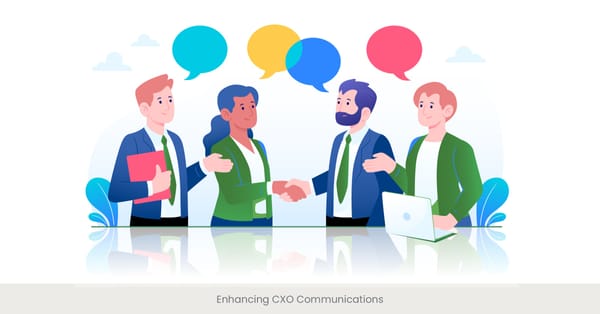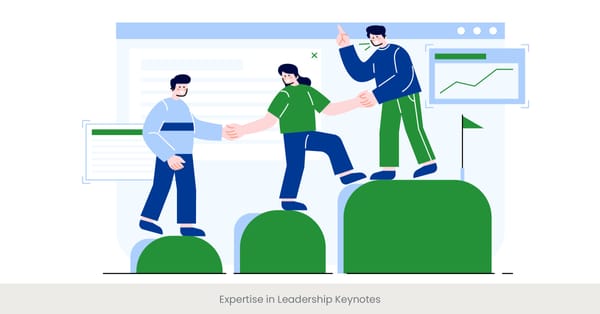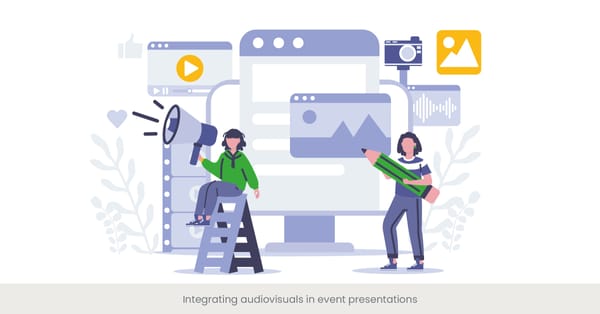
Planning Presentations for Various Types of Marketing Events
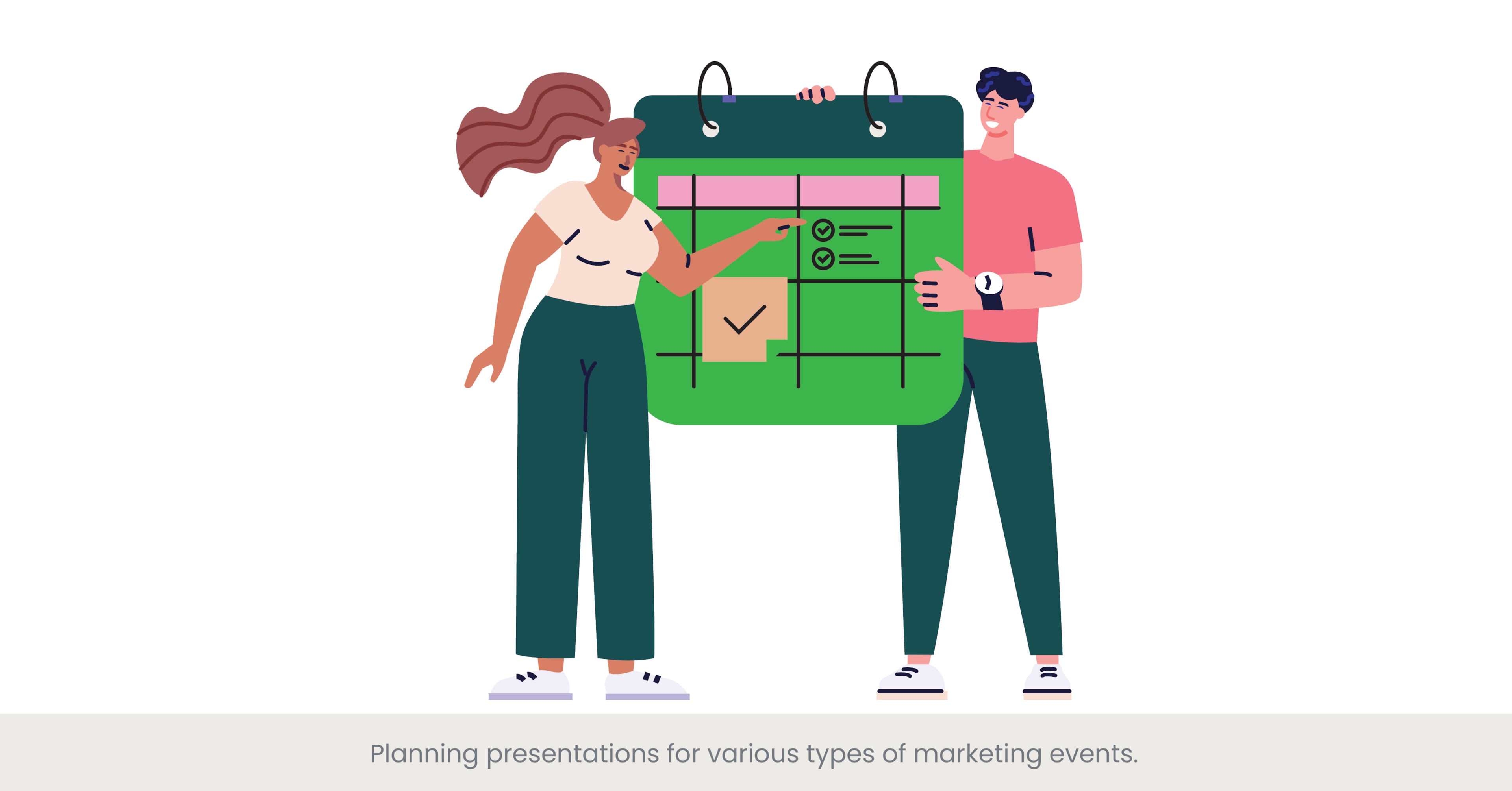
The Essentials of Event Presentation Planning
Effective planning is crucial for crafting presentations that resonate at marketing events. Whether it's a product launch, a trade show, or a corporate seminar, a well-planned presentation can significantly enhance audience engagement and drive event objectives. CMO Presentation Design focuses on aligning the presentation's content and style with the event's goals, ensuring a seamless integration with the overall marketing strategy. By considering the event type and audience, presenters can tailor their content to meet specific needs and expectations, making the presentation both impactful and memorable.
Deep Dive into Planning Techniques
The planning phase involves several key steps, starting with a thorough understanding of the event's purpose and the target audience. Identifying the presentation training main message and objectives is essential, as this will guide the development of the presentation's structure and content. Utilizing a presentation template can streamline the design process, ensuring consistency and professionalism. Additionally, integrating elements of presentation design, such as visuals, animations, and interactive features, can enhance the presentation's effectiveness. CMO Presentation Design Agency services often include consultation on these aspects, providing expert guidance to create polished and compelling presentations.
Real-World Examples and Applications
Real-world examples highlight the importance of tailored presentations for different marketing events. For instance, at a tech company's product launch, the presentation might include live demos and detailed data visualization to showcase the product's features and benefits. On the other hand, a presentation at a trade show might focus on eye-catching visuals and succinct messaging to attract passersby and initiate conversations. Companies like Apple and Google frequently utilize CMO Presentation Design strategies to ensure their presentations are both engaging and informative, effectively capturing the audience's attention and driving interest in their products.
References and Supporting Evidence
Research underscores the importance of planning in creating successful presentations. According to a study by the Harvard Business Review, well-planned presentations are more likely to achieve their intended outcomes, such as increased audience engagement and higher conversion rates. Additionally, a report by the Presentation Guild highlights that presentations incorporating professional design services, like those offered by a CMO Presentation Design Agency, are perceived as more credible and impactful. These findings validate the emphasis on thorough planning and professional design in event presentations.
By focusing on meticulous planning and utilizing professional design services, marketing leaders can create presentations that not only align with event goals but also captivate and engage their audience, ensuring a successful outcome for clients and their marketing efforts.
Adapting Presentations to Different Audiences at Multi-Faceted Events
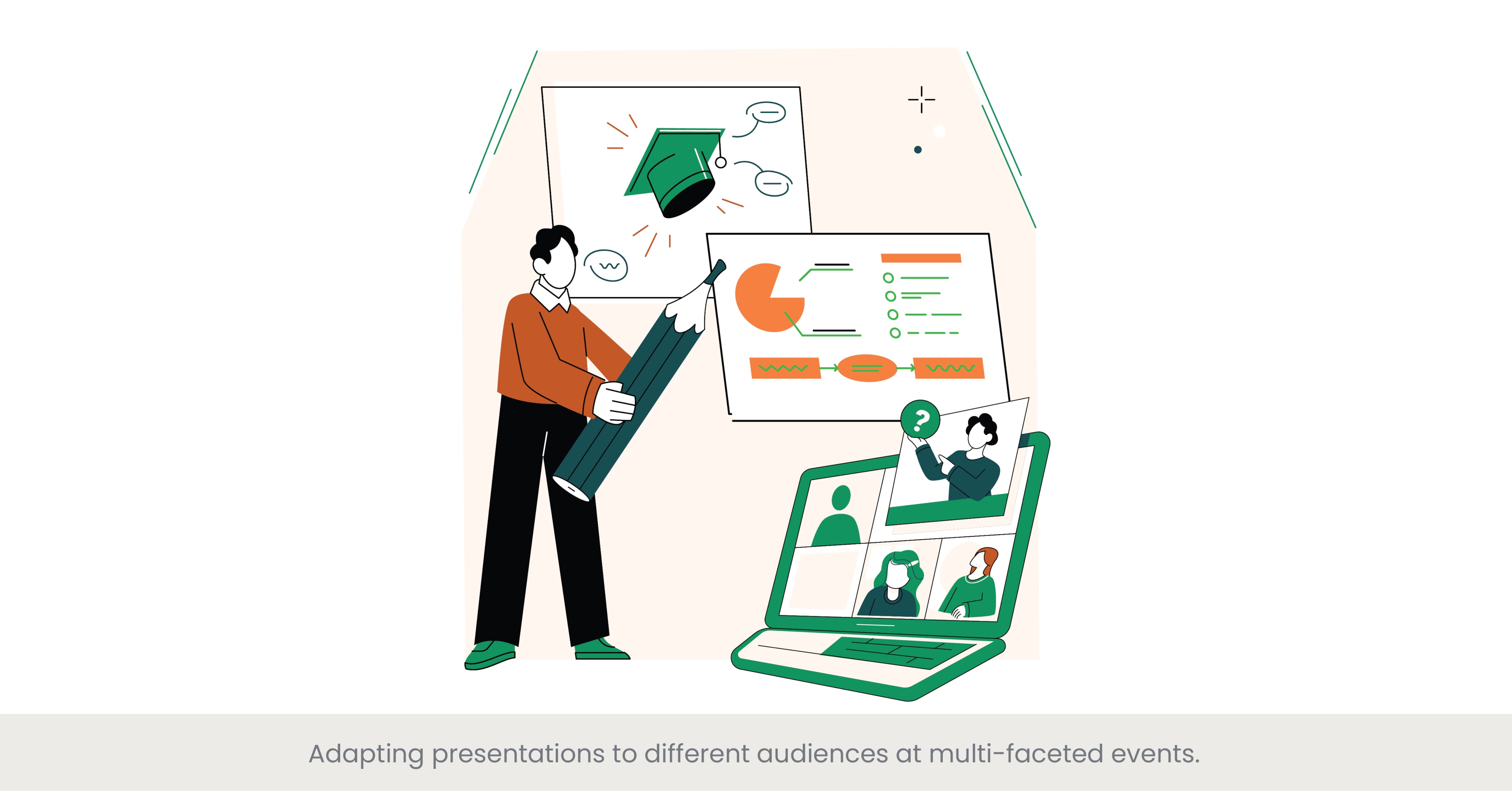
Tailoring Presentations for Diverse Audiences
Adapting presentations to different audiences at multi-faceted events is essential for ensuring that the message resonates with all attendees. A marketing leader must consider the varying interests, backgrounds, and knowledge levels of their audience. CMO Presentation Design focuses on customizing content to meet the specific needs of each audience segment, enhancing the overall impact of the presentation. By tailoring the message and delivery style, presenters can engage diverse groups effectively, ensuring that everyone leaves with a clear understanding of the key points.
Understanding Audience Segmentation
Audience segmentation involves dividing the event attendees into distinct groups based on characteristics such as industry, role, or level of expertise. This allows for the creation of targeted presentations that address the specific interests and concerns of each segment. For example, a presentation design might differ significantly for a technical audience compared to a group of marketing professionals. Presentation templates can be customized to include different sets of data, visuals, and examples that are relevant to each audience. This approach ensures that the presentation remains engaging and informative, regardless of the audience's background.
Practical Applications and Real-World Examples
Real-world examples demonstrate the effectiveness of adapting presentations to diverse audiences. For instance, at a global tech conference, a CMO Presentation Design Agency might create multiple versions of a presentation for different breakout sessions. A session aimed at software developers might include detailed technical specifications and live coding demos, while a session for potential investors might focus on market opportunities and financial projections. This tailored approach ensures that each audience receives the most relevant and valuable information, enhancing their engagement and satisfaction with the presentation.
References and Supporting Evidence
The importance of audience adaptation in presentations is supported by research and expert opinions. According to a study by McKinsey & Company, presentations that are tailored to the audience's needs and preferences are significantly more effective in achieving their goals. Additionally, a report by the Presentation Guild highlights that customized presentations are perceived as more relevant and engaging, leading to better audience retention and feedback. These findings validate the practice of adapting presentations for different audience segments, aligning with the principles of CMO Presentation Design.
By tailoring presentations to the specific needs of different audiences at multi-faceted events, marketing leaders at global companies can ensure that their message is effectively communicated and well-received, maximizing the impact of their presentations.
Discussing the Integration of Live Demos and Product Showcases
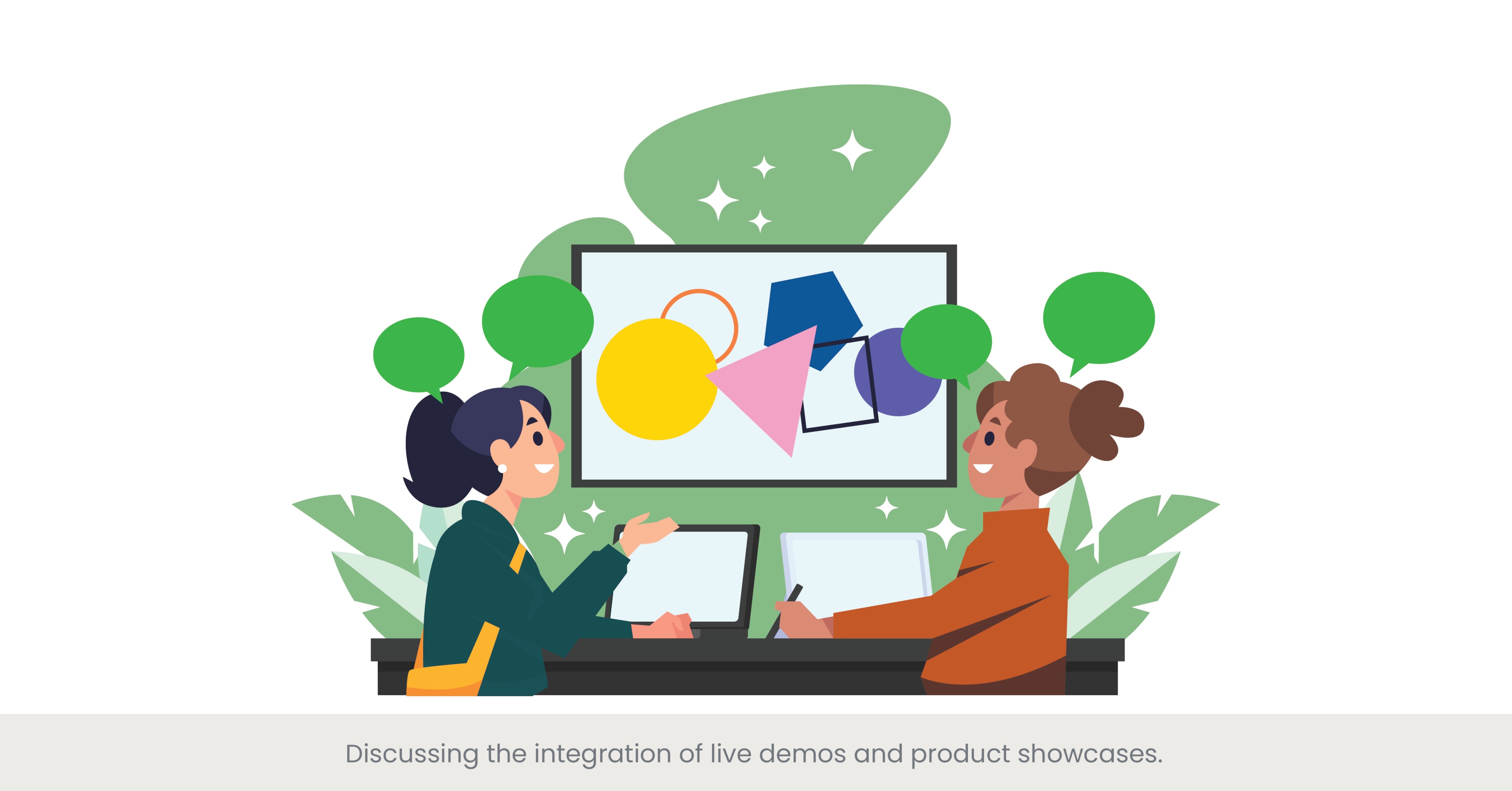
Enhancing Presentations with Live Demos and Product Showcases
Integrating live demos and product showcases into presentations can significantly elevate the engagement and impact of marketing events. A CMO Presentation Design expert leverages these elements to provide a hands-on experience, making abstract concepts tangible and demonstrating the practical value of products or services. Live demos and showcases allow the audience to see the product in action, ask questions, and gain a deeper understanding of its features and benefits. This approach not only captivates the audience but also builds credibility and trust.
The Role of Live Demos in Marketing
Live demonstrations play a crucial role in marketing by offering a real-time, interactive experience that static slides and videos cannot match. They provide an opportunity to highlight key features, showcase user-friendly interfaces, and demonstrate unique selling points. A well-executed live demo can address potential concerns, dispel doubts, and convince the audience of the product's value. Presentation design services often include planning and scripting for live demos to ensure they run smoothly and effectively communicate the intended message.
Practical Examples and Industry Applications
Real-world applications of live demos and product showcases are prevalent across various industries. For instance, during tech conferences like CES, companies such as Samsung and Sony often use live demos to introduce new gadgets, highlighting innovative features through hands-on demonstrations. At a software launch event, a tech company might perform a live demo of their new application, showing its interface, capabilities, and ease of use in real-time. These examples illustrate how live demos can make presentations more dynamic and engaging, providing a memorable experience for the audience.
References and Supporting Evidence
The effectiveness of live demos and product showcases is supported by research and industry insights. According to a report by the Event Marketing Institute, live demos can increase product interest by up to 73%, as they allow potential customers to interact with the product directly. A study by Bizzabo found that 87% of marketers believe that integrating live demos into presentations enhances audience engagement and interest. These findings validate the use of live demonstrations in presentations, aligning with the strategies employed by CMO Presentation Design experts.
By incorporating live demos and product showcases into their presentations, marketing leaders can provide sales team with a compelling, interactive experience that highlights the practical value of their products, engages the audience, and drives interest and conversions.
Techniques for Energizing and Captivating Event Audiences
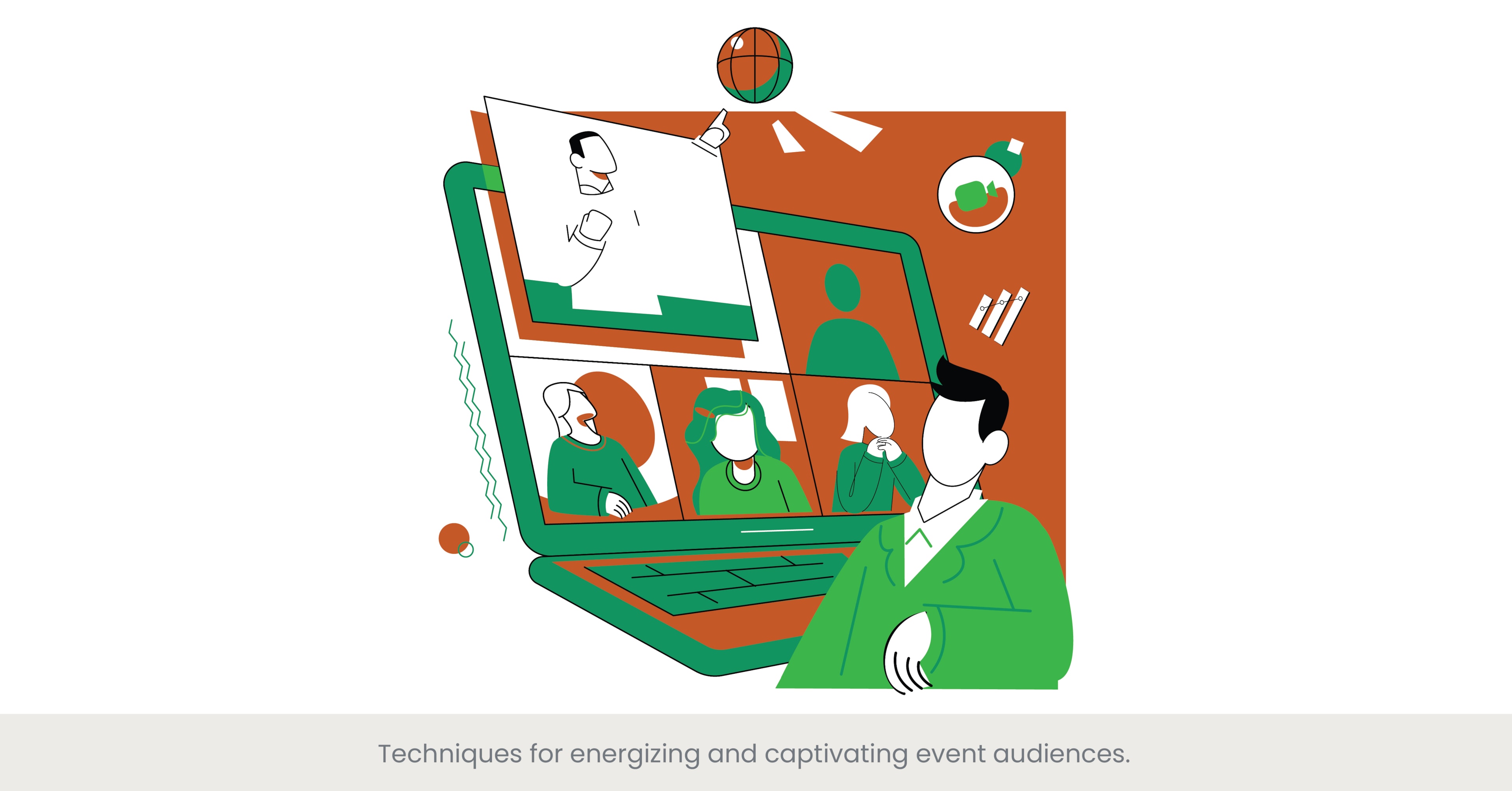
Energizing and Captivating Your Audience
Energizing and captivating an audience is crucial for the success of any marketing presentation. A marketing leader must employ various techniques to keep the audience engaged, attentive, and interested throughout the presentation. Utilizing CMO Presentation Design strategies can significantly enhance the ability to captivate audiences, making presentations not only informative but also entertaining and memorable. By incorporating interactive elements, storytelling, and dynamic visuals, presenters can create a lively atmosphere that keeps the audience's focus and enthusiasm high.
Understanding Audience Engagement Techniques
To effectively energize and captivate an audience, presenters need to understand and implement various engagement techniques. These include using eye-catching visuals, incorporating humor, asking questions, and involving the audience through interactive elements like polls or Q&A sessions. Presentation design services often recommend using a mix of multimedia elements, such as videos, animations, and infographics, to break the monotony of static slides. Additionally, a well-structured presentation with clear and concise messaging helps in maintaining the audience's attention.
Real-World Examples and Practical Applications
Successful marketing presentations often employ innovative techniques to keep the audience engaged. For instance, during Apple's product launches, presenters use a combination of live demonstrations, high-quality videos, and compelling storytelling to maintain excitement and interest. Another example is TED Talks, where speakers use personal anecdotes, humor, and powerful visuals to connect with the audience emotionally and intellectually. These presentations are meticulously crafted to ensure that every element works together to captivate the audience, illustrating the effectiveness of using diverse engagement techniques.
References and Supporting Evidence
Research supports the importance of using dynamic techniques to energize and captivate audiences. According to a study by the Journal of Business and Technical Communication, presentations that incorporate interactive elements and multimedia are more likely to retain audience attention and improve information retention. A report by Gallup also highlights that engaging presentations can lead to higher audience satisfaction and a greater likelihood of taking desired actions. These findings validate the use of CMO Presentation Design strategies to create engaging and captivating presentations.
By employing various techniques to engage viewers energize and captivate their audience, marketing leaders can ensure their presentations are not only informative but also memorable and impactful, ultimately leading to greater audience engagement and achievement of event objectives.
Strategies for Using Presentations to Drive Event Objectives
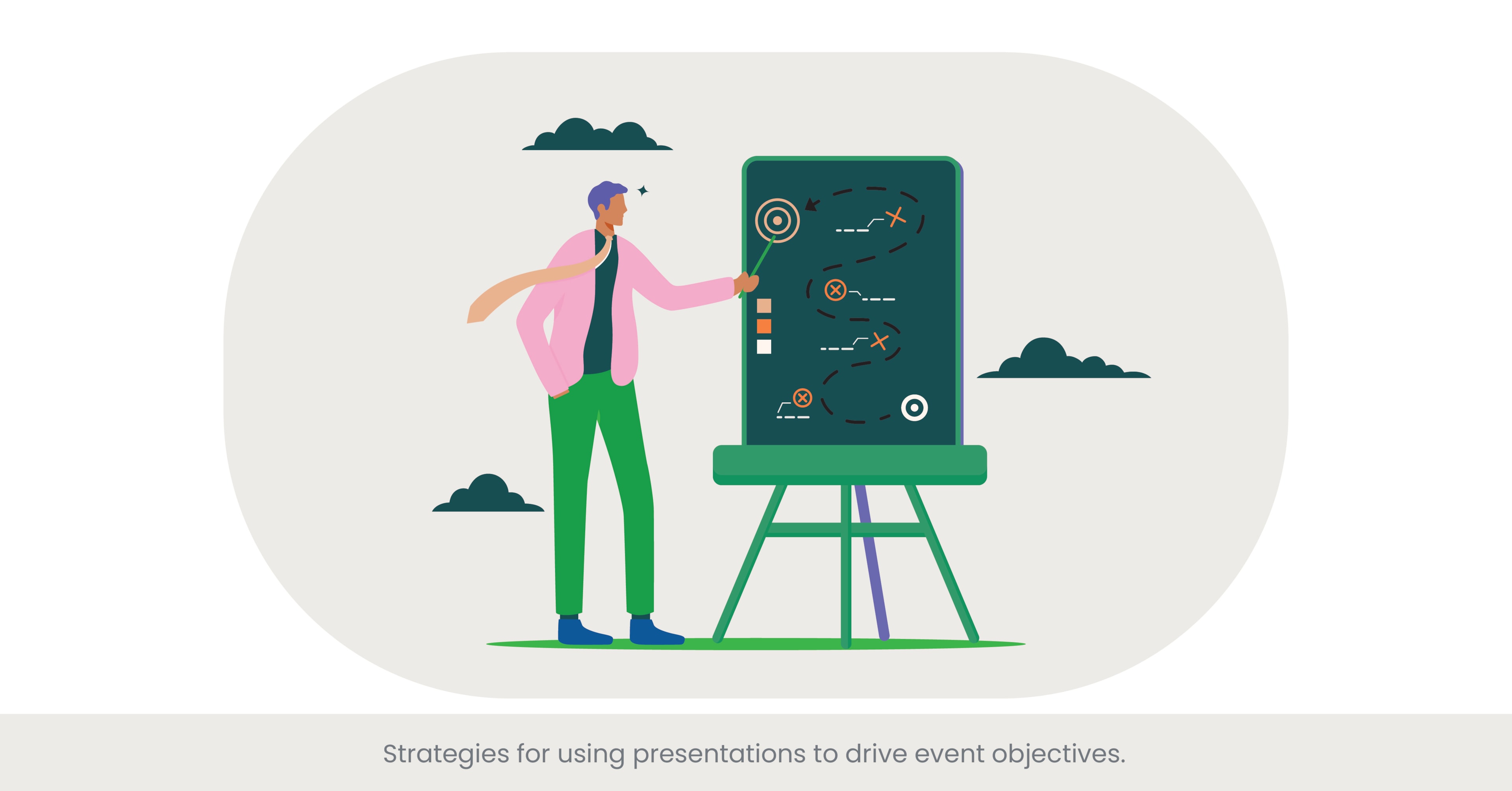
Aligning Presentations with Event Objectives
Utilizing presentations to drive event objectives is a strategic approach that ensures every aspect of the presentation contributes to the overall goals of the event. A CMO Presentation Design expert focuses on aligning the presentation content, structure, and delivery with the event's specific objectives, whether it's to increase brand awareness, generate leads, or educate the audience. By clearly defining the objectives beforehand and tailoring the presentation to meet these goals, marketing leaders can maximize the impact of their presentations and ensure they support the broader event strategy.
Deep Dive into Objective-Driven Presentation Strategies
Creating presentations that drive event objectives involves a detailed understanding of what the event aims to achieve. This starts with a clear identification of key performance indicators (KPIs) and metrics that will measure success. Presentation design services can help structure the presentation to highlight these objectives, using targeted messaging, data visualization, and calls to action that encourage the audience to engage in desired behaviors. For example, if the objective is to generate leads, the presentation might include compelling case studies, testimonials, and a clear pathway for the audience to express interest or sign up for more information.
Practical Examples and Industry Applications
In practice, aligning presentations with event objectives can be seen in successful corporate events and conferences. For instance, at Salesforce’s annual Dreamforce event, presentations are meticulously crafted to drive various objectives such as showcasing new products, educating users on best practices, and generating excitement around the brand. Each session is designed to engage specific audience segments and encourage them to take actionable steps, such as adopting new tools or participating in follow-up training sessions. Another example is HubSpot's INBOUND conference, where presentations are aligned with objectives like community building and customer education, using a mix of inspiring keynote speeches and practical workshops to achieve these goals.
References and Supporting Evidence
The importance of aligning presentations with event objectives is supported by research and industry best practices. According to a study by the Event Marketing Institute, events with clearly defined objectives and aligned presentations are more likely to achieve their goals, with a significant increase in audience engagement and satisfaction. A report by Frost & Sullivan also emphasizes the role of strategic presentations in driving event outcomes, highlighting that well-aligned presentations can enhance the overall effectiveness of an event. These findings validate the approach of using CMO Presentation Design strategies to create objective-driven presentations.
By strategically aligning presentations with event objectives, marketing leaders can ensure that their presentations not only engage the audience but also drive specific outcomes that contribute to the success of the event, achieving both immediate and long-term goals.
Discussing the Use of Storytelling in Event Presentations
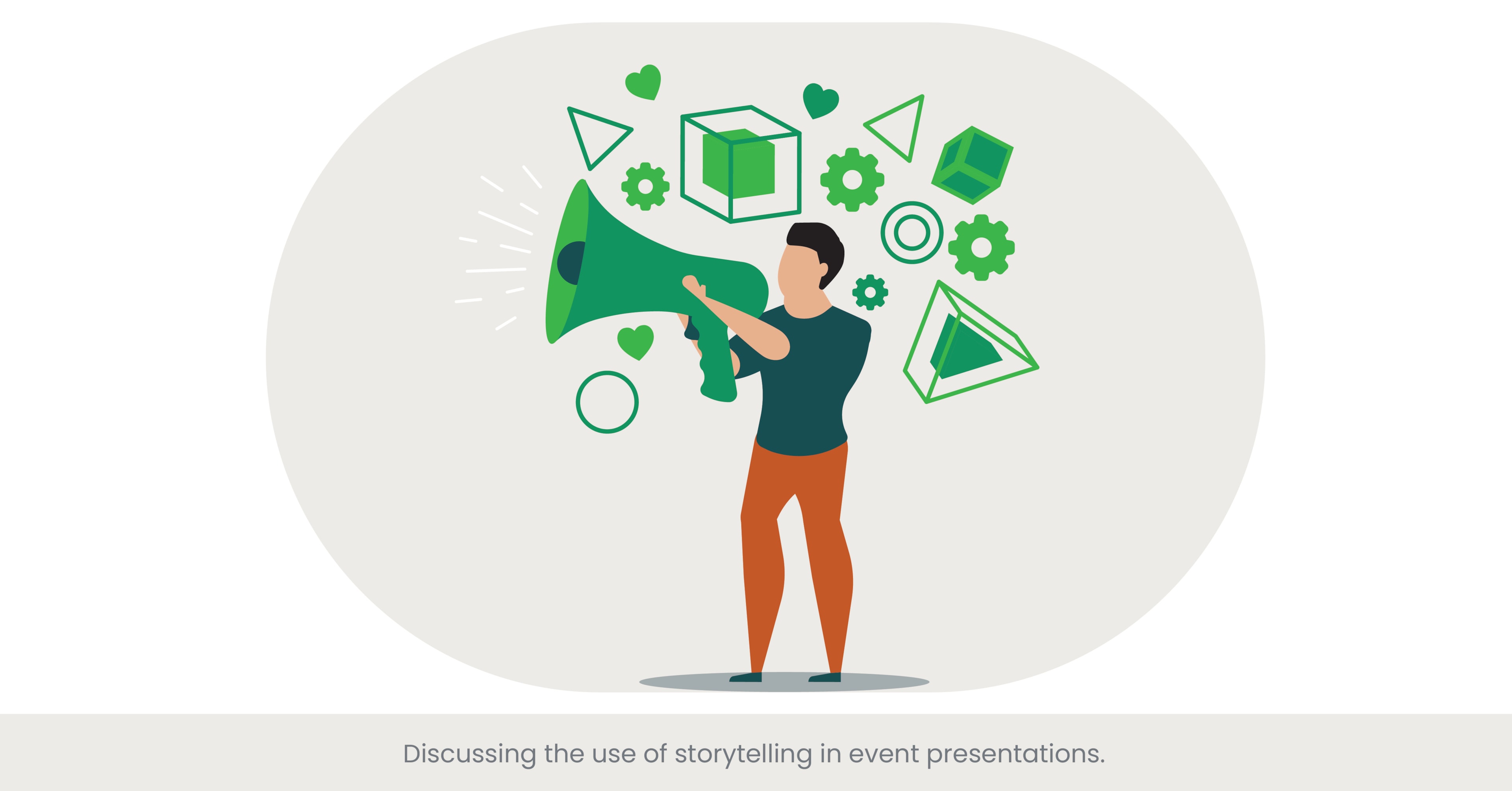
The Power of Storytelling in Event Presentations
Storytelling is a powerful tool in event presentations, enabling marketers to connect with their audience on an emotional level and make their message more memorable. A CMO Presentation Design expert leverages storytelling techniques to craft compelling narratives that resonate with the audience, turning complex information into engaging stories. By weaving a narrative throughout the presentation, marketers can create and deliver a more immersive and impactful experience that captures the audience's attention and conveys the core message effectively.
Understanding Storytelling Techniques
Effective storytelling in presentations involves several key elements: a clear structure, relatable characters, a compelling plot, and an emotional hook. The structure typically includes a beginning that sets the scene, a middle that presents the challenge or main content, and an end that offers a resolution or call to action. Presentation design services often incorporate these elements into the design process, ensuring that each slide contributes to the overall narrative. Additionally, the use of visual aids, such as images, videos, and infographics, can enhance the storytelling experience by providing visual context and reinforcing key points.
Real-World Examples and Practical Applications
Successful use of storytelling in event presentations can be seen in many high-profile marketing campaigns. For instance, Steve Jobs was renowned for his storytelling abilities during Apple product launches. His presentations often followed a narrative arc, starting with a problem and leading to how Apple’s new product provided the solution. Similarly, at TED Talks, speakers use personal anecdotes and powerful stories to connect with their audience, making their presentations more impactful and memorable. These real-world examples demonstrate how storytelling can transform a standard presentation into an engaging and persuasive experience.
References and Supporting Evidence
The effectiveness of storytelling in presentations is supported by extensive research. According to a study by Stanford University, stories are up to 22 times more memorable than facts alone, highlighting the power of narrative to enhance retention and recall. The Harvard Business Review also emphasizes that storytelling can create a stronger emotional connection with the audience, making the message more persuasive and impactful. These findings validate the use of storytelling techniques in CMO Presentation Design, demonstrating their value in creating engaging and effective presentations.
By incorporating storytelling into their presentations, marketing leaders can create more engaging and memorable experiences for their audience, ensuring that their message resonates and drives action.
Techniques for Incorporating Feedback and Interaction in Live Events
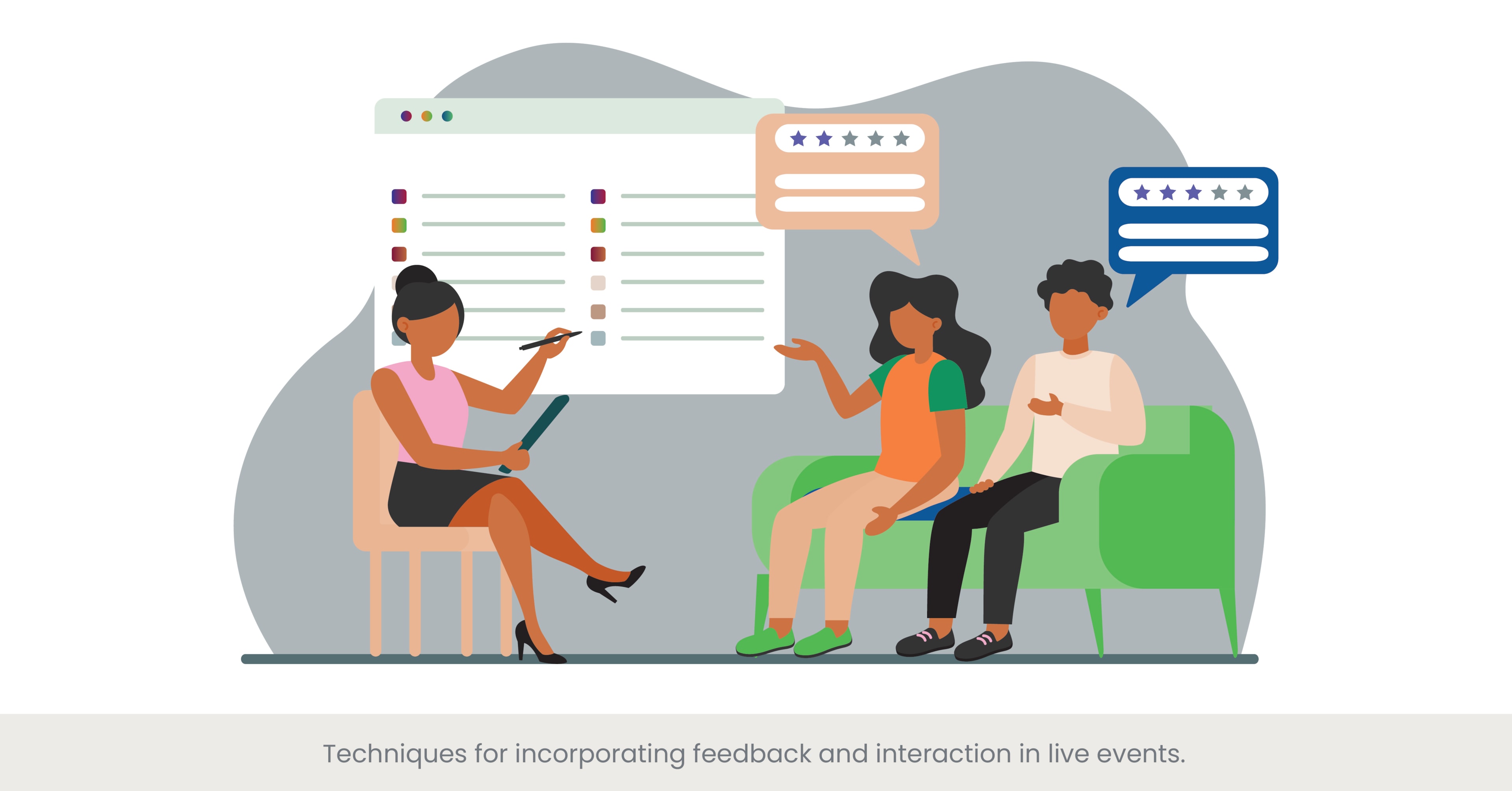
Enhancing Presentations with Feedback and Interaction
Incorporating feedback and interaction in live event presentations is essential for engaging the audience and making the presentation more dynamic. A CMO Presentation Design expert uses various techniques to facilitate real-time interaction, ensuring that the audience remains involved and their input is valued. Interactive presentations not only capture attention but also provide valuable insights that can be used to adjust and improve the presentation in real-time. This approach enhances the overall experience and ensures that the presentation meets the audience's needs and expectations.
Understanding Interactive Techniques
There are several methods to incorporate feedback and interaction into live event presentations. Polling, Q&A sessions, live chat, and interactive quizzes are effective ways to engage the audience. Presentation design services often include tools and software that support these interactive elements. For instance, using platforms like Slido or Mentimeter, presenters can conduct live polls to gather audience opinions or questions. These tools make it easy to integrate interactive components into the presentation, providing a seamless and engaging experience. Additionally, using feedback mechanisms, such as post-event surveys or real-time feedback buttons, helps in collecting valuable data to assess the presentation's effectiveness.
Real-World Examples and Applications
Real-world examples of incorporating feedback and interaction in presentations can be seen in various successful events. For instance, during Microsoft's annual Ignite conference, live polls and Q&A sessions are used extensively to engage the audience and address their questions in real-time. Another example is Adobe's MAX conference, where interactive breakout sessions and workshops allow participants to provide immediate feedback and interact directly with presenters and peers. These interactive elements create a more engaging and personalized experience, making the presentations more impactful.
References and Supporting Evidence
Research supports the importance of feedback and interaction in live presentations. According to a study by the Event Marketing Institute, interactive presentations can increase audience engagement by up to 50%, as participants are more likely to stay focused and involved. A report by Gallup highlights that interactive elements can lead to higher satisfaction rates and better retention of information. These findings validate the use of interactive techniques in CMO Presentation Design, emphasizing their role in creating effective and engaging presentations.
By incorporating feedback and interaction into their presentations, marketing leaders can enhance audience engagement, gather valuable insights, and ensure their presentations are more dynamic and responsive to the audience's needs.
Exploring the Role of Multimedia in Enhancing Event Presentations
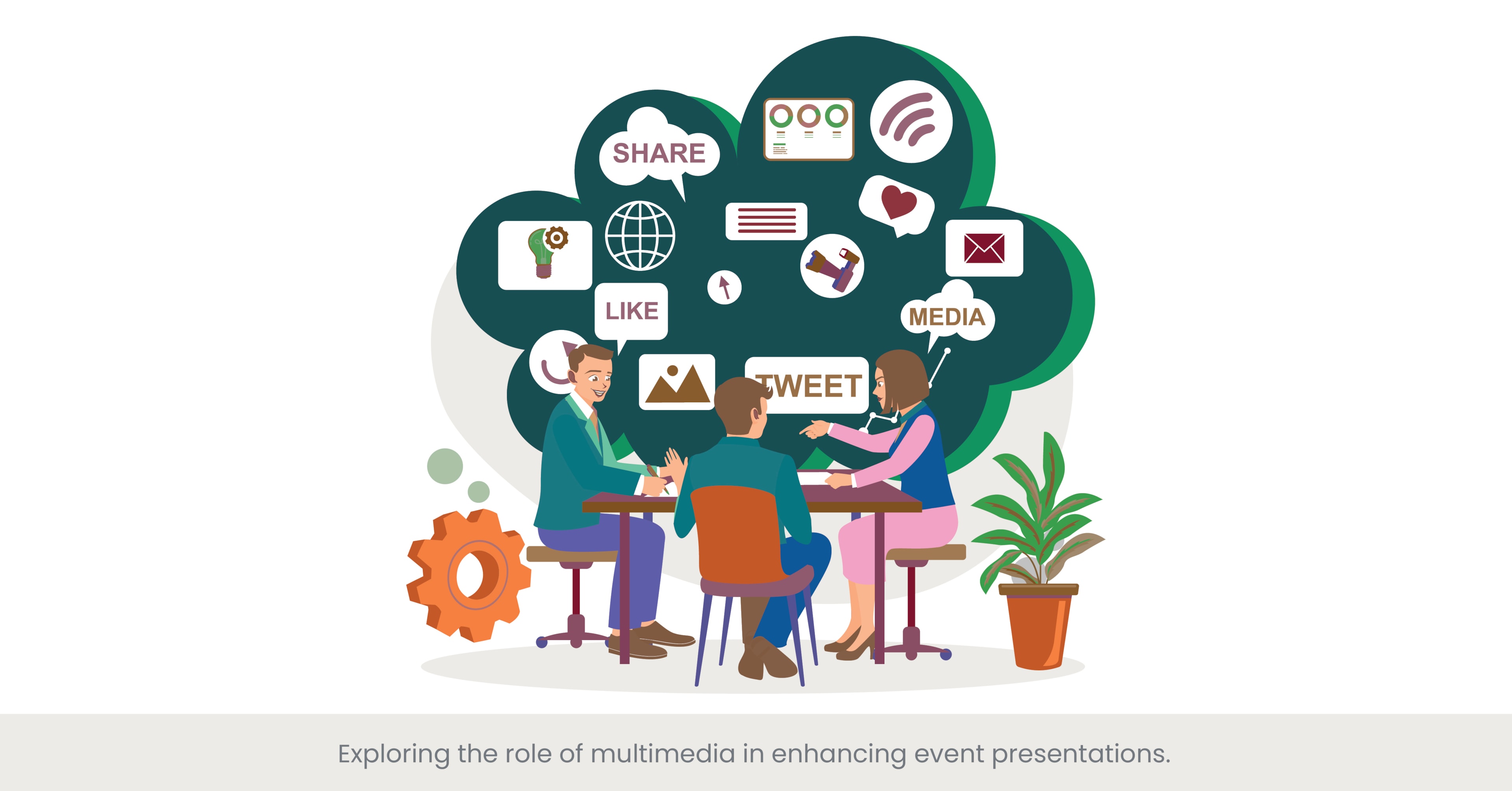
The Impact of Multimedia in Presentations
Incorporating multimedia into event presentations significantly enhances their effectiveness and engagement. A CMO Presentation Design expert uses multimedia elements such as videos, animations, and interactive graphics to create a more dynamic and immersive experience for the audience. By integrating these elements, presenters can break the monotony of text-heavy slides, illustrate complex ideas more clearly, and capture the audience's attention. The use of multimedia transforms standard presentations into visually appealing and memorable experiences, making the message more impactful.
Understanding Multimedia Elements
Multimedia elements include a wide range of digital content, such as video clips, animations, audio recordings, and interactive graphics. These elements can be used to illustrate key points, provide visual context, and engage the audience through multiple sensory channels. Presentation design services often recommend the strategic use of multimedia to enhance the narrative and maintain audience interest. For example, a short video clip can be used to introduce a topic, while animations can help explain complex processes. Interactive graphics allow the audience to engage with the content directly, making the presentation more interactive and engaging.
Real-World Examples and Practical Applications
The use of multimedia in presentations is prevalent in many successful marketing events. For instance, at the annual Google I/O conference, multimedia elements such as live demos, animations, and videos are extensively used to showcase new technologies and products. These elements help to illustrate the functionality and benefits of the products in a compelling and understandable way. Another example is the use of video testimonials and case studies in presentations by Salesforce at their Dreamforce conference. These multimedia elements provide real-world examples and evidence of success, enhancing the credibility and impact of the presentation.
References and Supporting Evidence
The effectiveness of multimedia in enhancing presentations is supported by various studies and expert opinions. According to a report by Forbes, presentations that incorporate multimedia elements are more likely to keep the audience engaged and improve information retention. The Journal of Educational Psychology found that combining visual and auditory information can increase retention by up to 75%. These findings validate the use of multimedia in CMO Presentation Design, demonstrating its value in creating engaging and effective presentations.
By integrating multimedia elements into their presentations, digital marketing and leaders can create more dynamic and engaging experiences, ensuring that their message is delivered effectively and remembered by the audience.
Providing Tips for Follow-Up After Event Presentations to Maximize Impact
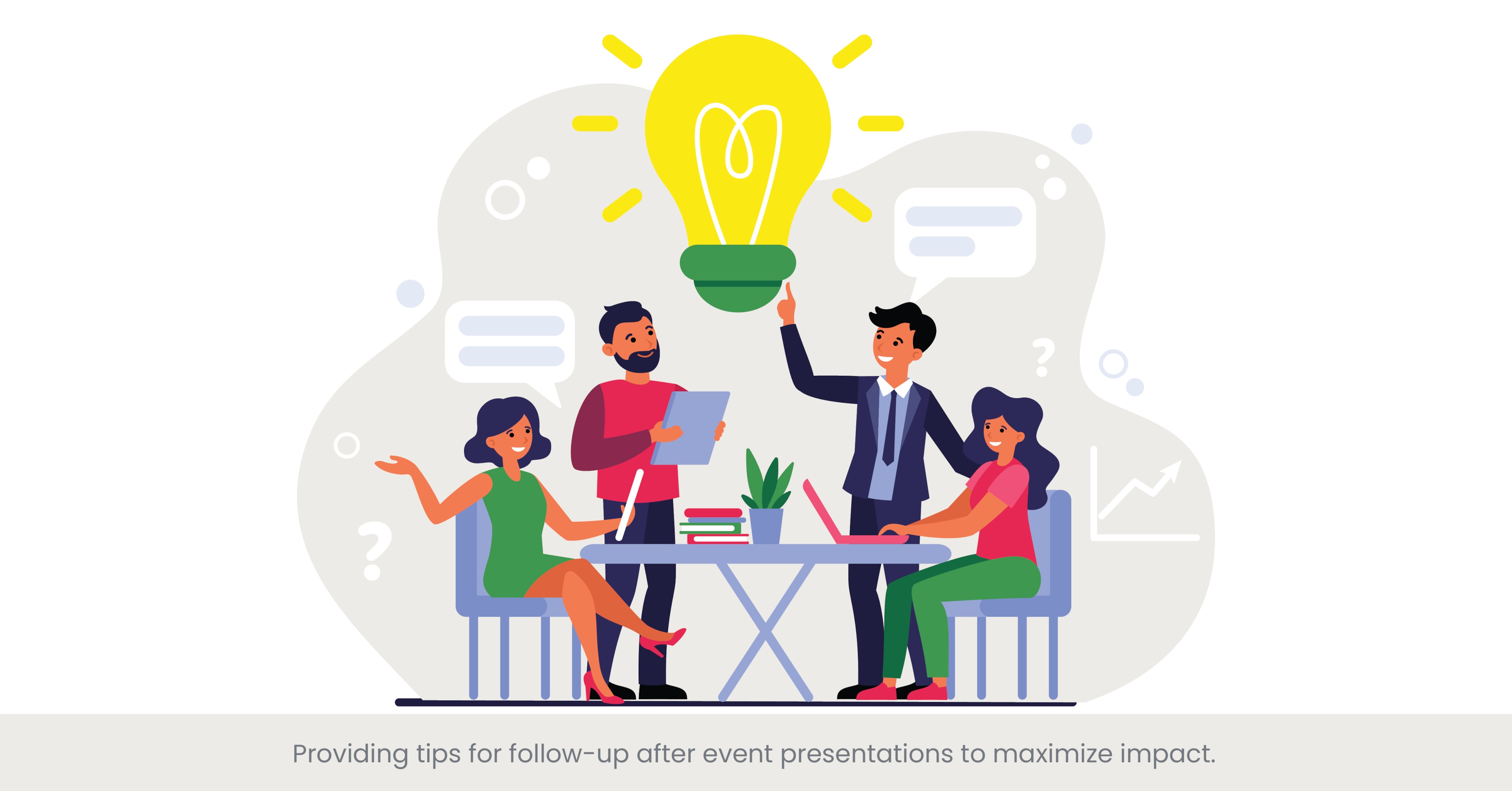
The Importance of Follow-Up After Event Presentations
Following up after event presentations is crucial for maximizing the impact of the presentation and ensuring sustained engagement with the audience. A well-executed follow-up strategy can help reinforce key messages, address any unanswered questions, and convert interest into action. A CMO Presentation Design expert understands the significance of follow-up and integrates it into the overall presentation plan. Effective follow-up not only solidifies the connection made during the event but also opens avenues for continued communication and business opportunities.
Crafting an Effective Follow-Up Strategy
An effective follow-up strategy involves several key components. First, it is essential to promptly reach out to attendees with personalized messages, thanking them for their participation and providing any promised materials, such as slide decks or additional resources. Utilizing presentation design services to create professional and visually appealing follow-up content can enhance the impression left on the audience. Additionally, incorporating feedback mechanisms, such as surveys or feedback forms, can provide valuable insights into the audience's experience and areas for improvement. Follow-up communications should also include clear calls to action, encouraging recipients to take the next step, whether it's scheduling a meeting, signing up for a newsletter, or visiting a website.
Real-World Examples and Practical Applications
Successful follow-up strategies can be observed in various industries. For example, after a major product launch event, a tech company might send out personalized emails to attendees, including a thank you note, a summary of the presentation, and a link to a demo video. This approach was effectively used by companies like Microsoft and Apple, which maintain high levels of engagement with their audience post-event. Another example is a professional services firm that follows up after a conference presentation by offering a free consultation or an in-depth report on the topic discussed. These follow-up actions not only reinforce the presentation's content but also provide additional value to the audience.
References and Supporting Evidence
Research underscores the importance of effective follow-up strategies. According to a study by the Event Marketing Institute, 68% of marketers believe that post-event follow-up is the most critical factor in achieving event objectives. A report by HubSpot highlights that businesses that implement a robust follow-up strategy see a 47% increase in conversion rates. These findings validate the necessity of integrating follow-up into CMO Presentation Design, demonstrating its impact on sustaining audience engagement and driving business results.
By implementing a comprehensive follow-up strategy, marketing team leaders can maximize the impact of their event presentations, ensuring continued engagement and conversion long after the event has concluded.
Analyzing Successful Event Presentation Strategies Used by Top Companies

Learning from Top Companies' Presentation Strategies
Analyzing successful event presentation strategies used by top companies provides valuable insights into best practices and innovative approaches. Leading companies like Apple, Google, and Salesforce have mastered the art of creating impactful presentations that engage audiences and drive business objectives. A CMO Presentation Design expert studies these examples to extract key elements that can be applied to their own presentations. By understanding what makes these presentations successful, marketing leaders can adopt similar strategies to enhance their own event presentations.
Key Elements of Successful Presentation Strategies
Top companies' presentations often share several common elements: a strong narrative structure, high-quality visuals, interactive components, and a clear call to action. These presentations are meticulously planned and designed to resonate with the audience. Presentation design services play a crucial role in ensuring that every aspect of the presentation aligns with the company's brand and message. For instance, Apple’s product launches are known for their seamless integration of live demos, storytelling, and stunning visuals, all of which contribute to a cohesive and engaging experience. Google’s presentations often leverage data visualization and real-time interaction to keep the audience engaged and informed.
Real-World Examples and Applications
Real-world examples illustrate how top companies execute their presentation strategies effectively. Apple’s annual WWDC (Worldwide Developers Conference) showcases the company’s ability to blend technical content with compelling storytelling. Each presentation is designed to highlight new features and products in a way that is both informative and entertaining. Similarly, Salesforce’s Dreamforce event uses a mix of keynote speeches, interactive sessions, and customer testimonials to create a dynamic and impactful experience. These presentations are not only about showcasing products but also about building a narrative that connects with the audience on an emotional level.
References and Supporting Evidence
The success of these companies’ presentation strategies is supported by extensive research and industry accolades. According to a report by Forbes, companies that invest in high-quality presentation design see a significant increase in audience engagement, sales, and brand perception. A study by the Event Marketing Institute found that well-designed presentations can enhance the overall impact of an event, leading to higher attendee satisfaction and better business outcomes. These findings validate the effectiveness of the strategies employed by top companies, emphasizing the importance of investing in professional presentation design.
By analyzing and adopting the successful presentation strategies used by top companies, marketing leaders can improve their own event presentations, ensuring they are engaging, impactful, creative and aligned with business objectives.
Frequently Asked Questions (FAQs)
1. How do you structure a management presentation?
A management presentation should be structured to address key points clearly and concisely. Start with an engaging introduction that outlines the presentation's purpose and agenda. Follow with a detailed discussion of the main topics, supported by data and visuals. Conclude with a summary of key takeaways and a strong call to action. Ensure each section transitions smoothly and aligns with the overall message.
2. How do quality work when you create a presentation design?
Creating a presentation design involves several steps. Begin by defining the presentation's objectives and understanding the audience. Develop a clear and logical structure, including an introduction, body, and conclusion. Use a consistent design template that reflects the brand’s visual identity. Incorporate high-quality visuals, such as images, infographics, and videos, to enhance engagement. Finally, refine the design to ensure clarity and coherence.
3. What should be included in a brand identity presentation?
A brand identity presentation should include the following key elements:
- An overview of the brand’s mission, vision, and values.
- A detailed explanation of the brand's visual identity, including logos, color schemes, and typography.
- Examples of brand applications, such as marketing materials, packaging, and online presence.
- Guidelines for maintaining brand consistency across different platforms.
- Case studies or examples demonstrating the brand’s impact and recognition.
4. What is the presentation design template?
A presentation design template is a pre-designed layout that provides a consistent structure and style for presentations. It includes elements like slide layouts, color schemes, fonts, and placeholders for text and visuals. Using a template ensures a cohesive and professional look, making it easier to create visually appealing and organized presentations. Templates can be customized to fit the specific needs and branding of the presentation.

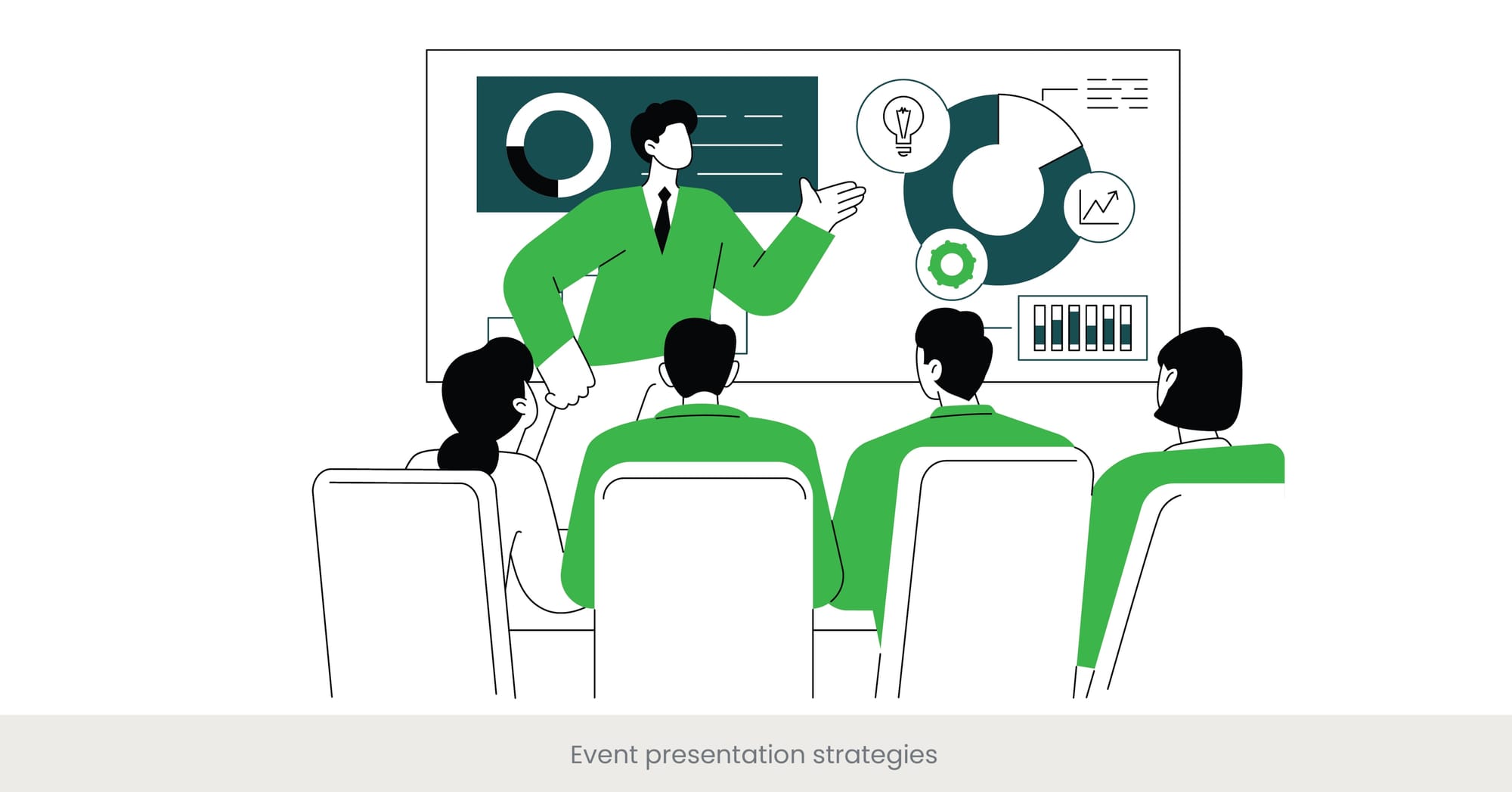

%20(1).jpg)
%20(1).jpg)
